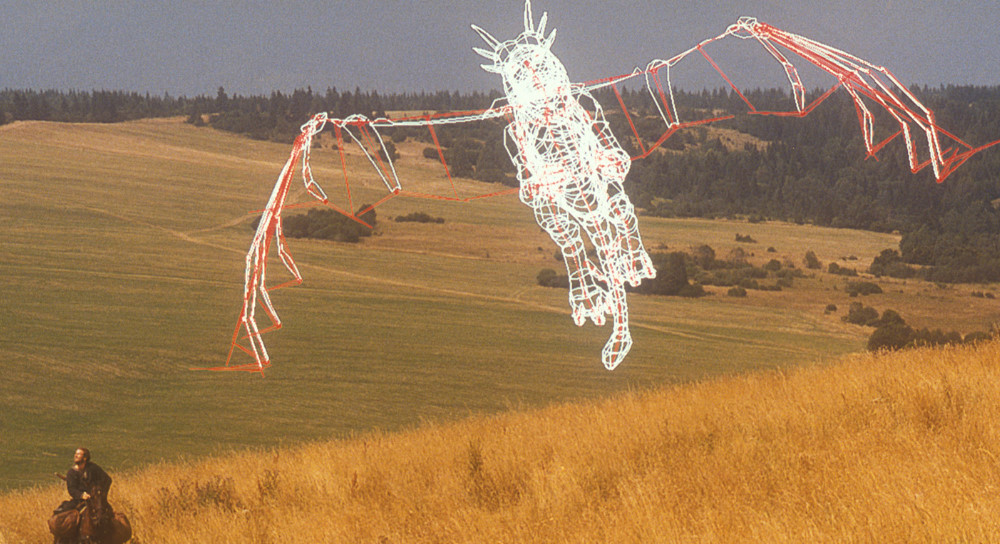The road to The Phantom Menace may have been ignited by the technical leaps brought about by Jurassic Park, but to bring to the screen the character and nuance George Lucas required took many more years of consistently pushing the envelope and creating new systems to allow characters like Watto and Jar Jar Binks to emote and live as convincing characters within the Star Wars world. Here, Lucasfilm take a closer look at their then-new Caricature software system which allowed CGI characters to speak as seen in the 1996 fantasy adventure Dragonheart.
The result was something different from anything ILM had achieved before. As Coleman explains, “ILM had done the T-1000, which is remarkable, but I think he only has one line as a liquid metal guy, when he’s in the helicopter and he says ‘Get out.’ It’s impressive and technically astounding, as is the water snake in The Abyss, but those characters didn’t have to act in this kind of way. To have an emoting, acting digital character sharing the screen with people like Julie Christie and Dennis Quaid was a huge ask. ILM was up for it as ILM always is, but as animators, we’d never been tested this way before. We’d never been asked to hold the audience’s attention and have them believe that this voice was coming out of that dragon.”
About a year after the film’s release, it was Coleman who would show George Lucas scenes from Dragonheart along with other recent examples of their work. “He stood there as I showed him the results of Caricature,” Coleman explains. “I learned later that it was in that meeting that George decided that ILM was ready to take on the digital characters for The Phantom Menace. He had been waiting for ILM’s technology and artistry to reach a certain point, because he knew that he wanted some characters to be made with computer graphics. He didn’t want to be tied down to animatronics and puppetry. He wanted digital characters interacting with live actors in a way that he never had in the original trilogy.”
On subsequent projects, the ILM crew wasted no time in improving the capability of their tools. Soon, animators could see a character’s entire body in relation to the face they were animating. New “Cari Renders” allowed for near-instant playback of rough animation. After ILM software developer Jim Hourihan created a new modeling tool, iSculpt, he and Phillips combined it with Caricature in order to create a system that allowed artists to both sculpt a model, dial in its movements, and animate them all in the same program. They also pioneered a technique called model correctives, a tool within Caricature that allowed artists to manually fix imperfections in 3D geometry, “like 3D-Photoshop,” as Giacoppo puts it.
- STAR WARS: THE ACOLYTE: This action figure is inspired by the live-action series on Disney+ -- a great gift for collectors and fans ages 4 and up
- PREMIUM DESIGN AND ARTICULATION: Star Wars fans and collectors can display this 6 inch action figure (15 cm) -- featuring premium design and multiple points of articulation, including a soft goods robe -- in their collections
- SERIES-INSPIRED ACCESSORIES: This Padawan Jecki Lon figure comes with a Lightsaber accessory, including a removable blade
- WINDOW BOX PACKAGING: Display Star Wars fandom on your shelf with window box packaging featuring sleek character design
- BUILD YOUR INTERSTELLAR SCENE: Look for more Star Wars Black Series action figures to build a collection of galactic proportions on your shelf! (Each sold separately. Subject to availability)



